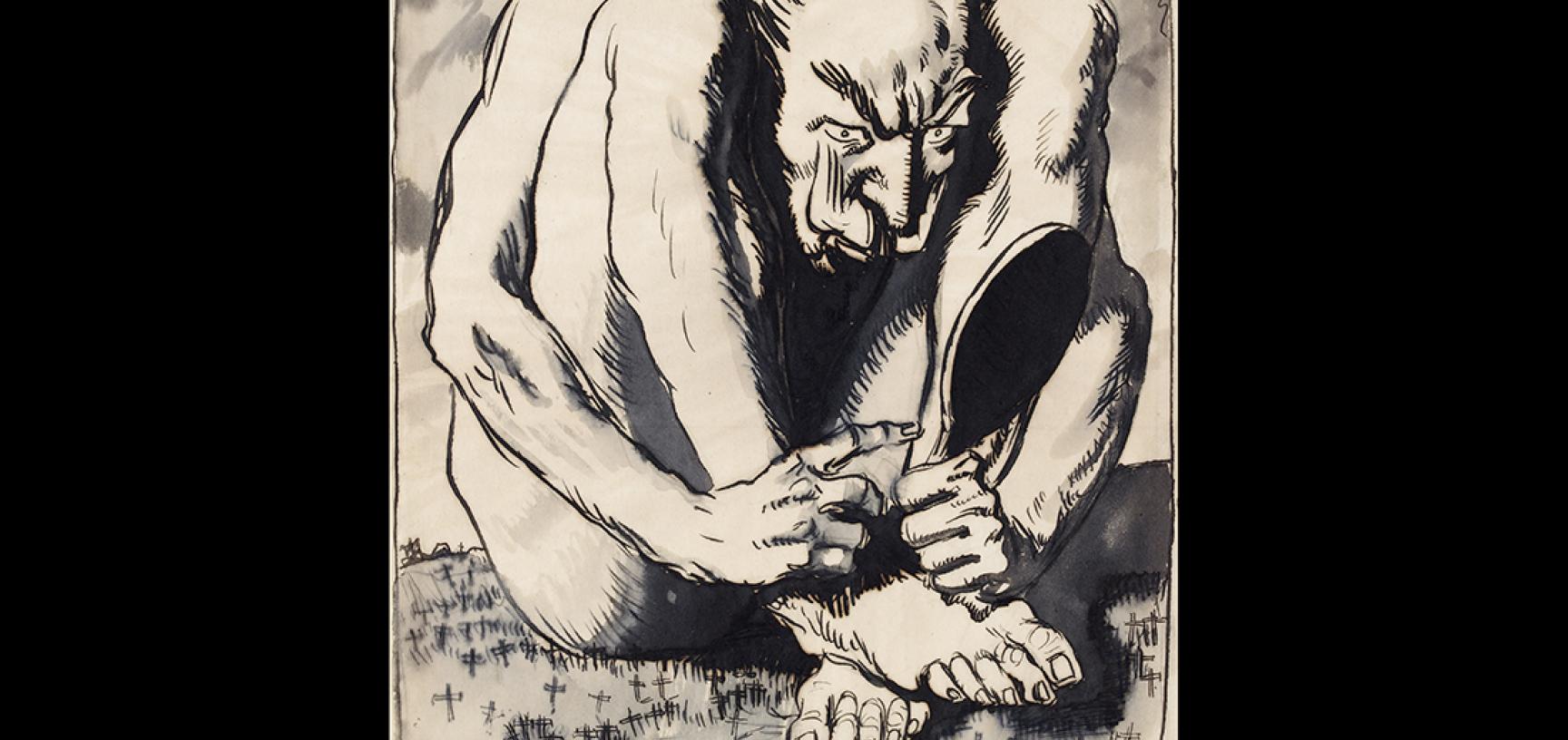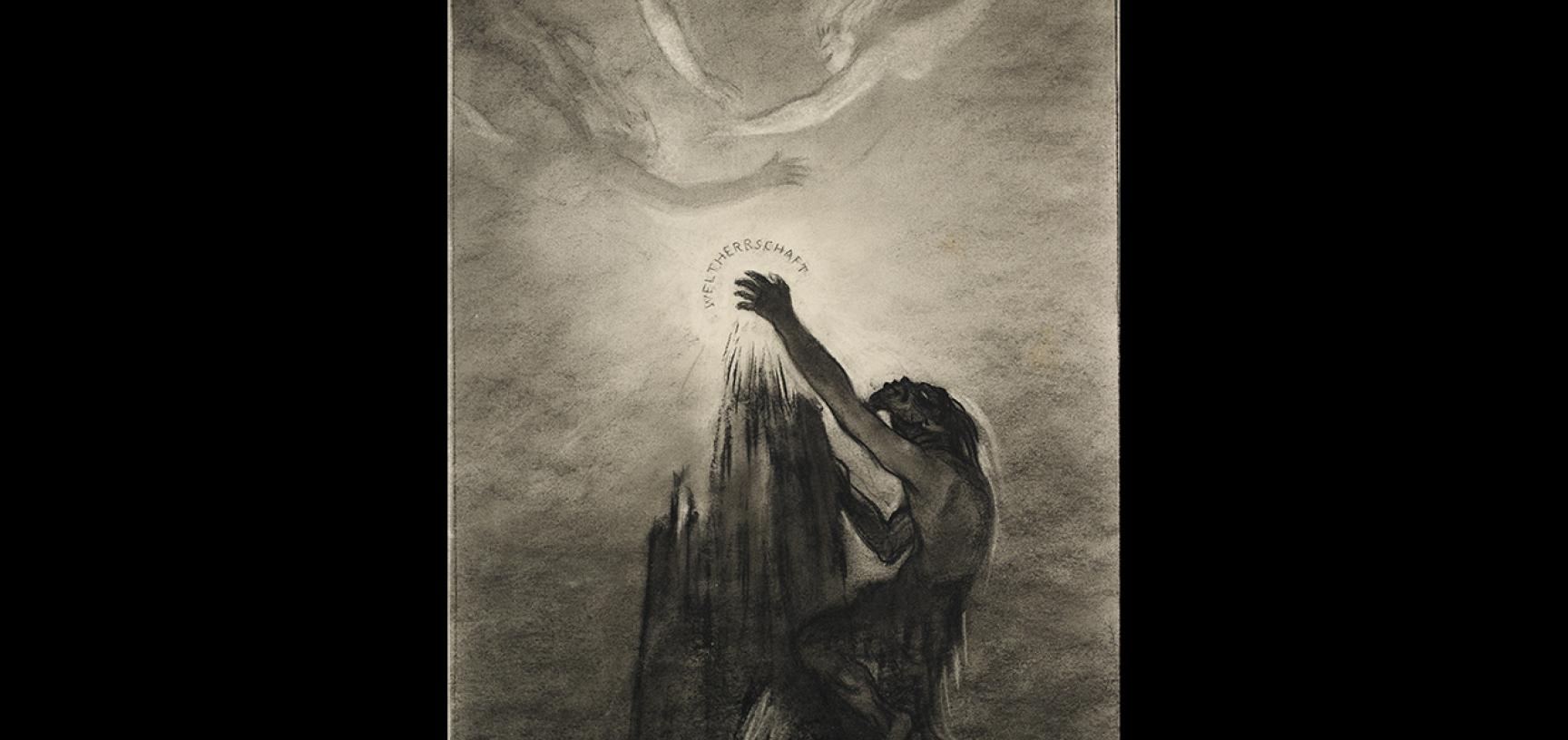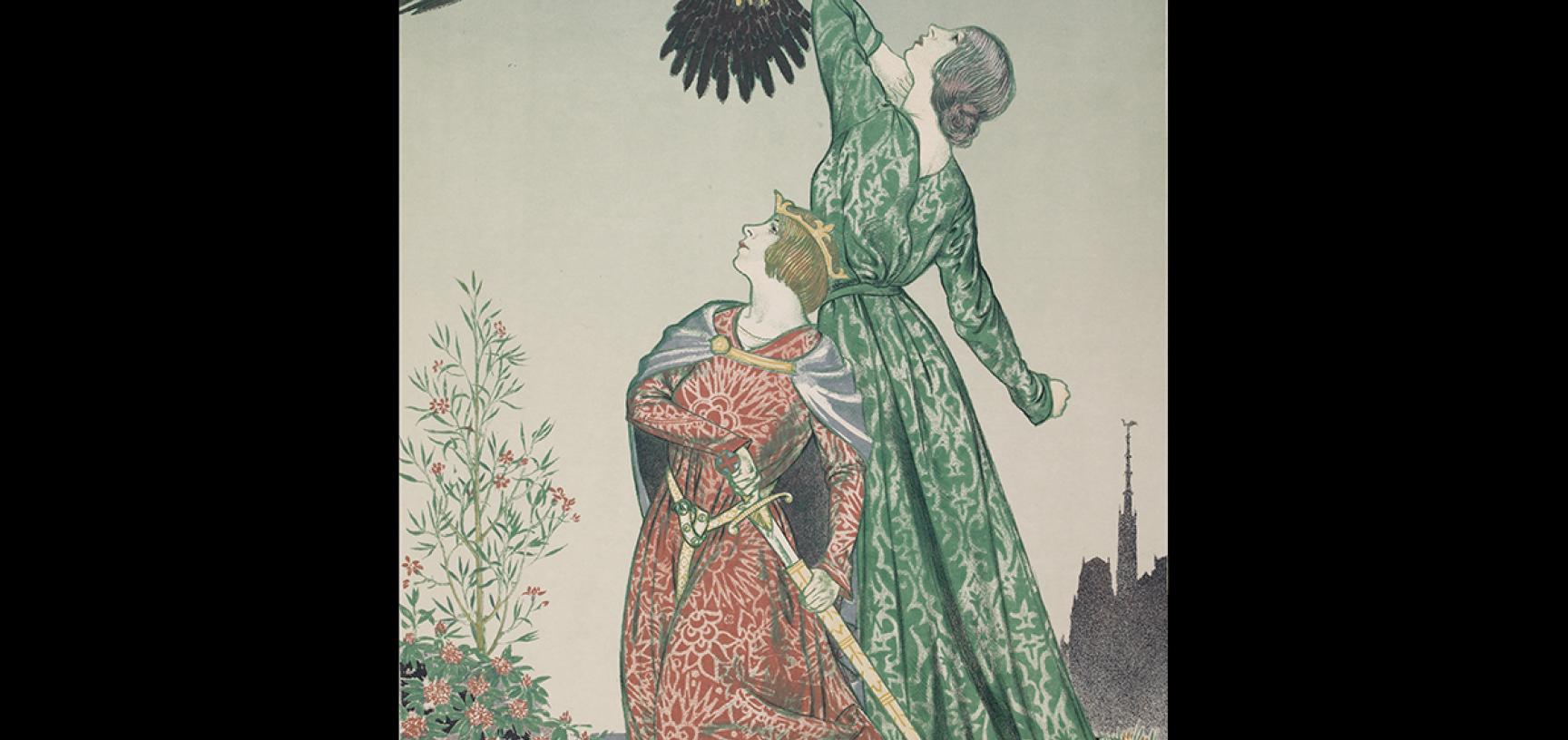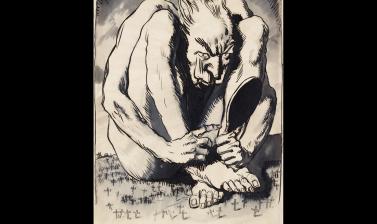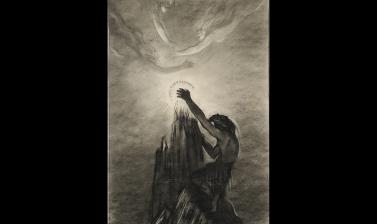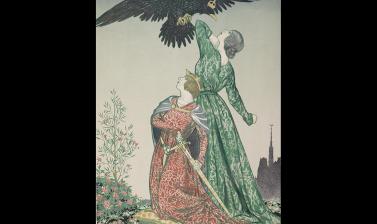PROPAGANDA AND CARICATURE

PROPAGANDA AND CARICATURE
1. William Orpen, Seeing Himself as Others See Him: caricature study of Kaiser Wilhelm II, 1919
Propaganda was a vital part of the war effort, and many talented artists contributed. The liberal politician Charles Masterman (1873–1927), in charge of propaganda from August 1914, declared 'It is absurdly difficult to explain why any particular piece of propaganda is desirable. Every little piece of it easily looks ridiculous: it is only by the concentrated effect of all that the result we desire is obtained.' The Irish painter William Orpen (1878–1931) was appointed an official war artist in 1916, visiting the Western Front in 1917. He created several caricatures of the Kaiser. Here he uses the Kaiser's nakedness to emphasize his vulnerability, though the crouching figure has a threatening coiled strangeness reminiscent of Japanese Netsuke carvings or grotesque figures by Hieronymus Bosch.
2. Glyn Warren Philpot, German Ambition Reaches Out for World Domination (Deutsche Ehrgeiz will Weltherrschaft Fassen), 1917
Glyn Philpot (1884–1937) produced a number of drawings presenting the European conflict in terms of myth and fable. A great fan of Richard Wagner's music, he produced twelve drawings interpreting the war through the Ring cycle. He depicts characters drawn from Wagner's Götterdämmerung, or Twilight of the Gods, with Brunnhilde playing the part of 'Pan-Germanism' and Siegfried that of 'Prussian Militarism'. Here the dwarf Alberich, representing German ambition, grasps greedily for the ring, which stands for 'World Domination'; meanwhile, the Rhinemaidens circle protectively above Brunnhilde's rock. The drawings do not appear to have been officially commissioned, but were published by Philpot in 1917 as Die Hohenzollerndämmerung, Eine Welt-Tragödie (Twilight of the Hohenzollerns, A World Tragedy).
3. Francis Ernest Jackson, United Defence against Aggression (England and France, 1914), 1917
This lithograph is the fifth of twelve subjects entitled 'The Ideals', commissioned from a number of established artists by the Ministry of Information for the series The Great War: Britain's Efforts and Ideals (1917). The 'Efforts' subjects in the series are naturalistic in style, portraying wartime activities, but the 'Ideals' are more overtly propagandist and nationalistic in tone. Francis Ernest Jackson (1872–1945), who was originally apprenticed as a lithographer, was in charge of producing the Efforts and Ideals series. Here he shows England and France combining forces to beat off the eagle, which symbolizes the German Reich. The decorative elegance and soft pastel colours of this work are a world away from the realities of conflict, but the image celebrates the vital spirit of common purpose that underpinned public morale.


